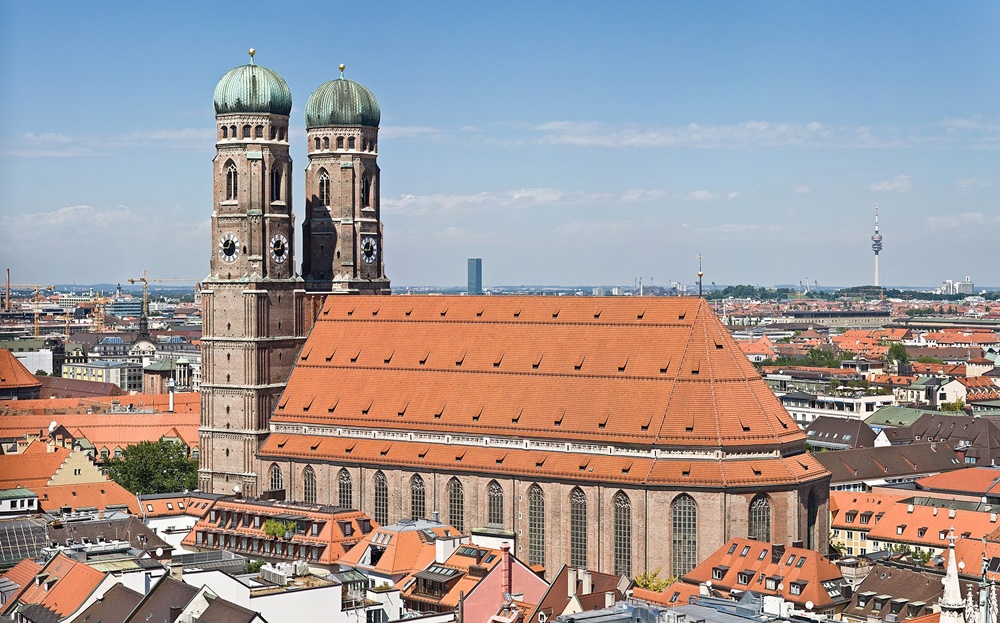The Frauenkirche, or Cathedral of Our Dear Lady, stands as a commanding symbol of Munich’s skyline, an architectural masterpiece that has witnessed centuries of history, culture, and religious significance. Nestled in the heart of the city, this iconic cathedral has not only become a focal point for worship but also a testament to Munich’s resilience, having withstood the tests of time and conflict.
Constructed in the late 15th century, the Frauenkirche was commissioned by Duke Sigismund of Bavaria as a cathedral for the city. The renowned architect Jörg von Halsbach oversaw the project, creating a structure that would become one of the defining landmarks of Munich. The cathedral’s design is characterized by Late Gothic architecture, with towering spires, arched windows, and a sense of grandeur that reflects the religious fervor of the time.
The Frauenkirche is best known for its distinctive twin towers, locally referred to as “Die Zwiebeltürme” or onion domes, due to their bulbous shape. These towers, each rising to a height of 99 meters, dominate the Munich skyline and are visible from various vantage points throughout the city. According to local legend, the devil made a pact with the builder, promising not to interfere with the construction. In exchange, the devil required that the church have no windows. Crafty builders, however, designed the church in such a way that it appears windowless from certain angles, fulfilling the pact in a clever manner.
The interior of the Frauenkirche is a sanctuary of tranquility and religious splendor. The cathedral features a nave with high, rib-vaulted ceilings, creating a sense of verticality that draws the gaze upward. The imposing columns and arches contribute to the cathedral’s majestic atmosphere. The choir is adorned with intricate stone carvings, and the high altar, dedicated to the Assumption of the Virgin Mary, serves as a focal point for worship.
One of the notable features within the Frauenkirche is the Teufelstritt, or Devil’s Footstep. Legend has it that the devil, realizing that the builders had outsmarted him, left a mark in frustration. The footprint, visible near the entrance, has become a popular point of interest for visitors seeking to unravel the cathedral’s folklore.
Throughout its history, the Frauenkirche has faced challenges, particularly during World War II when it suffered extensive damage due to Allied bombings. However, the resilience of Munich and its commitment to preserving cultural heritage led to the post-war restoration of the Frauenkirche. Today, the cathedral stands as a testament to the city’s determination to rebuild and retain its historical landmarks.
The Frauenkirche serves as both a religious institution and a cultural treasure. Regular church services and religious ceremonies continue to be held within its hallowed halls, providing a spiritual haven for the local community. Additionally, the cathedral is a venue for concerts, cultural events, and organ recitals, attracting both locals and visitors with its rich acoustics and historical ambiance.
The Frauenkirche, with its enduring presence and symbolic significance, encapsulates the spirit of Munich. It is more than a place of worship; it is a living narrative of the city’s history, faith, and cultural identity. As locals and tourists alike stand beneath its twin towers or venture inside its sacred space, the Frauenkirche continues to inspire awe and reverence, inviting all to be a part of Munich’s enduring story.



